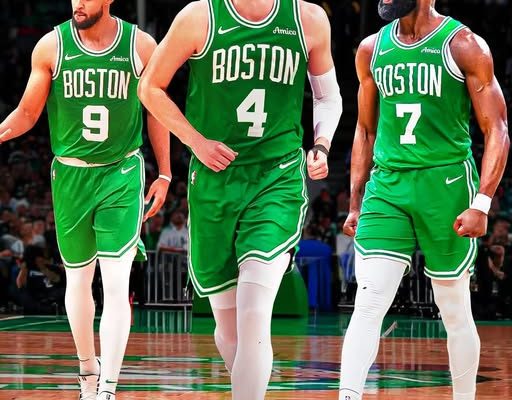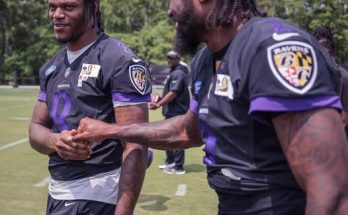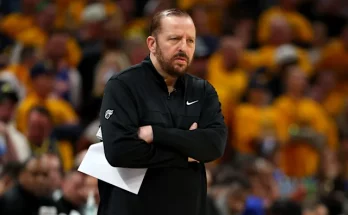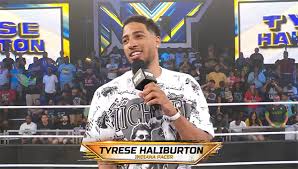The Boston Celtics have made a move that could go down as the quiet coup of the 2025 NBA offseason. In an era where splashy trades and star-studded acquisitions dominate headlines, it’s sometimes the subtle, forward-thinking deals that truly shift the balance of power. That’s precisely what Boston pulled off in acquiring 24-year-old center Walker Kessler from the Utah Jazz. While it may not carry the same immediate buzz as blockbuster trades of past summers, this move is a strategic masterstroke—both on the court and on the balance sheet.
Walker Kessler represents everything the Celtics need in their current phase: youth, upside, and financial flexibility. Boston, still reeling from the shocking announcement that Jayson Tatum will miss the 2025–26 season due to injury, is no longer in win-now mode. This presents a rare window of opportunity for the franchise to reset without the pressure of championship expectations. Rather than clinging to aging veterans or bloated contracts, the Celtics are executing a soft pivot—a recalibration that doesn’t dismantle their core but puts them in a far more sustainable position moving forward. Kessler is the linchpin to that strategy.
In a shrewd three-team trade involving the Jazz and Miami Heat, the Celtics sent Anfernee Simons, Neemias Queta, a future first-round pick, and cash considerations out the door in exchange for Kessler. Boston also generated a \$27.7 million trade exception in the process, adding another layer of long-term value. The immediate benefit is twofold: the Celtics now have a true shot-blocking, rim-protecting big man who fits seamlessly into their defensive identity, and they shave off nearly \$100 million in projected payroll and luxury tax obligations. In today’s NBA, that’s not just smart—it’s survival.
The financial aspect of this deal cannot be overstated. Boston has been teetering on the brink of the NBA’s dreaded repeater tax, a punitive system that severely penalizes teams that exceed the luxury tax threshold for three out of four seasons. For a franchise already saddled with enormous contracts tied to Jaylen Brown, Jrue Holiday, Kristaps Porziņģis (before his trade), and Tatum, navigating around that obstacle was a high-wire act. The NBA’s new Collective Bargaining Agreement further intensifies these financial pressures, making it imperative for front offices to balance elite talent with cap management. The Kessler trade provides Boston with immediate relief and long-term breathing room.
Kessler is not just a cap-friendly acquisition—he’s a legitimate building block. After two productive seasons in Utah, the 7-foot-1 center has established himself as one of the premier young defensive anchors in the league. His timing, footwork, and natural instincts make him a force in the paint. In 2024–25, he averaged 9.3 points, 8.2 rebounds, and 2.7 blocks per game in just under 25 minutes of action. His presence forced opponents to alter shots at the rim and allowed perimeter defenders to gamble more aggressively, knowing Kessler was lurking behind them. That’s the kind of gravitational defensive impact that rarely shows up on the stat sheet but makes a profound difference over the course of an 82-game season.
Offensively, Kessler remains a work in progress, but that’s not a problem for Boston. The Celtics aren’t asking him to become a low-post scoring threat or stretch five overnight. With Derrick White running the offense and Jaylen Brown continuing to evolve as a two-way scorer, Kessler’s role will be to set strong screens, finish lobs, and crash the offensive glass. His low usage rate makes him the perfect complementary piece—he doesn’t demand touches or disrupt offensive flow. What he provides is a vertical spacing element and a reliable target for dump-offs when the defense collapses.
Perhaps most importantly, Kessler is on a rookie-scale contract with one more year of team control before he becomes a restricted free agent. That means the Celtics can afford to be patient. They don’t need to rush into an extension this summer; instead, they can wait until next offseason when they’ll have more clarity on the cap landscape and Tatum’s recovery. By then, Kessler’s market value will be easier to gauge, and Boston can match any offer sheet he receives. In a league where cost-controlled, high-impact role players are worth their weight in gold, this kind of leverage is invaluable.
The trade also signals a cultural shift in Boston’s front office under Brad Stevens. Known more for his methodical approach than headline-grabbing moves, Stevens is showing that strategic patience can yield massive dividends. By offloading Holiday and Porziņģis earlier this summer and choosing not to chase high-priced replacements, Stevens has effectively bought the franchise two years of tax reset. That could prove monumental when it comes time to re-sign or extend players like White or Kessler without the constraints of the second apron.
The Celtics are betting that with Tatum back at full strength in 2026, their championship window will swing wide open once again. But this time, they’ll be equipped with a younger, more financially stable roster. Imagine a core of Tatum, Brown, White, and Kessler—surrounded by a mix of veteran shooters and athletic wings. That group has the potential to grow together, learn from past postseason shortcomings, and contend with continuity rather than chaos. Kessler might not be a superstar, but his acquisition reflects a deep understanding of team-building in the modern NBA. You don’t need five All-Stars to win a title. You need two stars, a defensive anchor, shooting, depth, and harmony.
Boston also sent a clear message to its fanbase: this isn’t a rebuild, it’s a reload. Yes, the 2025–26 season may be a transition year without Tatum. But that doesn’t mean the Celtics are punting on competitiveness. With White and Brown leading the charge, and young prospects like Jordan Walsh and JD Davison waiting in the wings, Boston still has the pieces to stay afloat. Kessler’s presence ensures that even if the offense sputters at times, the defense will remain elite. That’s the kind of stability that prevents losing streaks from spiraling into lottery territory.
There are still questions to answer, of course. Will Kessler continue to develop offensively? Can Boston stay healthy? Will ownership remain committed to paying luxury tax once the reset period ends? But for now, Celtics fans should feel a renewed sense of optimism. This team didn’t implode after Tatum’s injury—they adjusted. They didn’t recklessly chase a quick fix—they invested in the future. They didn’t panic when staring down cap penalties—they made one of the most financially savvy moves in recent NBA memory.
Walker Kessler may never dominate the highlight reels or earn a max contract, but his impact in Boston could be enormous. In a league where rim protection, durability, and fit matter more than ever, he brings all three in spades. The Celtics didn’t just acquire a player—they acquired peace of mind, a strategic asset, and a blueprint for sustainable success. And in the grand chessboard of NBA roster construction, that’s a checkmate move.
So while other teams bask in the glow of flashier acquisitions, Boston can quietly smile. They just got better, cheaper, and younger—all in one move. In a few years, we might look back on this trade as the moment the Celtics built their second great era around Tatum, not by swinging big, but by making the right move at the right time. And Walker Kessler, the unassuming giant in the middle, could be the reason why banner 18 doesn’t stay in storage much longer.



